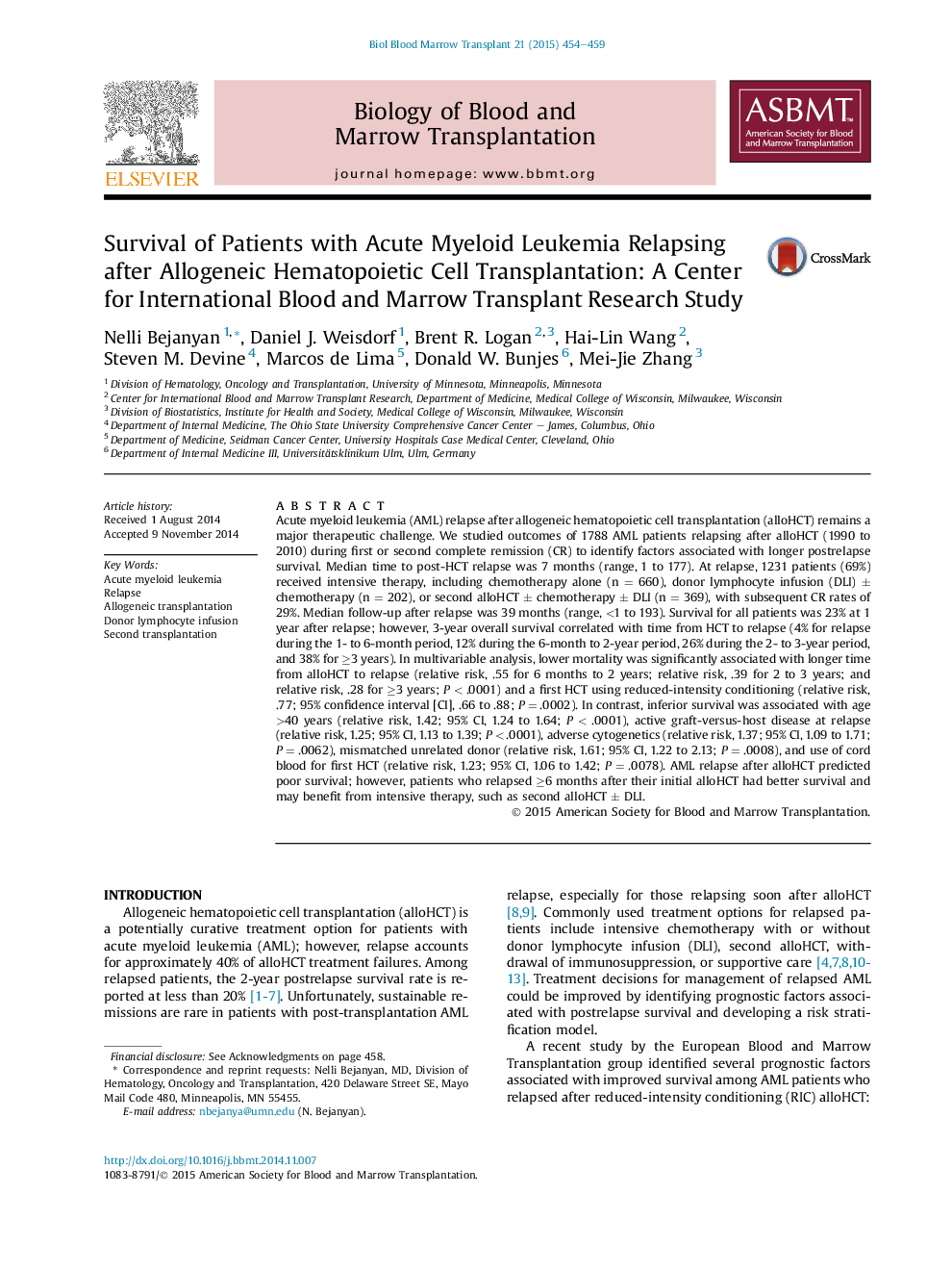| کد مقاله | کد نشریه | سال انتشار | مقاله انگلیسی | نسخه تمام متن |
|---|---|---|---|---|
| 2101515 | 1546269 | 2015 | 6 صفحه PDF | دانلود رایگان |
• Acute myeloid leukemia relapse is the major cause of treatment failure after allografting.
• Time from transplantation to relapse, patient age, cytogenetic risk group, donor type, HLA matching, and conditioning intensity were associated with postrelapse survival.
• Patients who benefited from cell-based therapy, such as donor lymphocyte infusion and second allograft, were those relapsing 6 months and later after their initial transplantation.
• These observations provide guidance for a choice of therapeutic intervention based on timing of relapse after allografting.
Acute myeloid leukemia (AML) relapse after allogeneic hematopoietic cell transplantation (alloHCT) remains a major therapeutic challenge. We studied outcomes of 1788 AML patients relapsing after alloHCT (1990 to 2010) during first or second complete remission (CR) to identify factors associated with longer postrelapse survival. Median time to post-HCT relapse was 7 months (range, 1 to 177). At relapse, 1231 patients (69%) received intensive therapy, including chemotherapy alone (n = 660), donor lymphocyte infusion (DLI) ± chemotherapy (n = 202), or second alloHCT ± chemotherapy ± DLI (n = 369), with subsequent CR rates of 29%. Median follow-up after relapse was 39 months (range, <1 to 193). Survival for all patients was 23% at 1 year after relapse; however, 3-year overall survival correlated with time from HCT to relapse (4% for relapse during the 1- to 6-month period, 12% during the 6-month to 2-year period, 26% during the 2- to 3-year period, and 38% for ≥3 years). In multivariable analysis, lower mortality was significantly associated with longer time from alloHCT to relapse (relative risk, .55 for 6 months to 2 years; relative risk, .39 for 2 to 3 years; and relative risk, .28 for ≥3 years; P < .0001) and a first HCT using reduced-intensity conditioning (relative risk, .77; 95% confidence interval [CI], .66 to .88; P = .0002). In contrast, inferior survival was associated with age >40 years (relative risk, 1.42; 95% CI, 1.24 to 1.64; P < .0001), active graft-versus-host disease at relapse (relative risk, 1.25; 95% CI, 1.13 to 1.39; P < .0001), adverse cytogenetics (relative risk, 1.37; 95% CI, 1.09 to 1.71; P = .0062), mismatched unrelated donor (relative risk, 1.61; 95% CI, 1.22 to 2.13; P = .0008), and use of cord blood for first HCT (relative risk, 1.23; 95% CI, 1.06 to 1.42; P = .0078). AML relapse after alloHCT predicted poor survival; however, patients who relapsed ≥6 months after their initial alloHCT had better survival and may benefit from intensive therapy, such as second alloHCT ± DLI.
Journal: - Volume 21, Issue 3, March 2015, Pages 454–459
